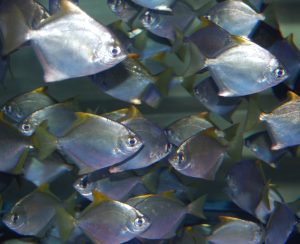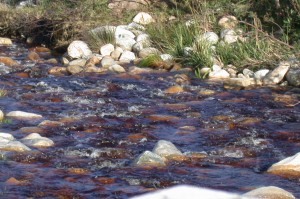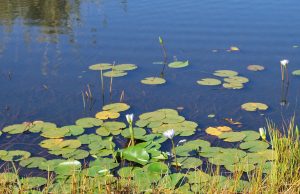CHAPTER < THIRTEEN – LESSONS FOR SURVIVAL
“Our task now is not to fix the blame for the past, but to fix the course for the future.” American President John F. Kennedy
 Like all forms of life on this blue planet, humanity’s existence is determined by a finite set of boundaries: the Earth’s mean temperature, the composition of its atmosphere, the quantity and quality of its available freshwater, the health of its sea and soil – these are some of the crucial factors that will determine whether, even with our advanced technological capacity to adapt, we are able to survive as a species on this planet or not. For if one factor in the equation of the Earth’s conditions changes, the interconnectedness of planetary systems will ensure that others soon follow suit.
Like all forms of life on this blue planet, humanity’s existence is determined by a finite set of boundaries: the Earth’s mean temperature, the composition of its atmosphere, the quantity and quality of its available freshwater, the health of its sea and soil – these are some of the crucial factors that will determine whether, even with our advanced technological capacity to adapt, we are able to survive as a species on this planet or not. For if one factor in the equation of the Earth’s conditions changes, the interconnectedness of planetary systems will ensure that others soon follow suit.
In spite of our heightened intelligence and intensive intervention, we are learning that it is not possible to push the boundaries of our survival past certain, in some cases still to be determined, limits. For we are learning that the Earth does not conform to humanity’s will. It is humanity that must conform to the limits as set by nature. This is a lesson that we are learning the hard way.
We are learning it with the tragic starvation of millions of southern African men, women and children as devastating drought continues to tighten its grip on the region. We are learning it with the forced displacement of millions of people around the world as the soil of their agricultural holdings becomes too exhausted to support their growing numbers.
 We are learning it with the loss of jobs as ocean fish stocks drop to levels that can no longer sustain once-thriving fisheries. We are learning it with the destruction of livestock and property as violent storms lash the landmasses of the globe. We are learning it with die-offs and the extinctions of other species. We are learning it with thirst, disease and poverty. We are learning it with earthquakes, bush fires and mudslides. We are learning it with hurricanes, floods, and rising mean temperatures.
We are learning it with the loss of jobs as ocean fish stocks drop to levels that can no longer sustain once-thriving fisheries. We are learning it with the destruction of livestock and property as violent storms lash the landmasses of the globe. We are learning it with die-offs and the extinctions of other species. We are learning it with thirst, disease and poverty. We are learning it with earthquakes, bush fires and mudslides. We are learning it with hurricanes, floods, and rising mean temperatures.
Population figures that are becoming ever more burdensome; human need that is reaching pandemic proportions; an atmospheric carbon dioxide level that is influencing a global warm-up; garbage that is choking the life out of many natural areas; widespread pollution of air, sea and soil; rising background radiation levels; unrestrained and unscrupulous exploitation of natural resources; inappropriate technology choices – these factors and more are drawing the boundaries of our survival ever closer, threatening the demise of our life on this planet as we know it. But perhaps in spite of these harsh lessons, or maybe even because of them, there is a miracle of hope for humankind.
As an ever-widening circle of dedicated people seek to find ways of ensuring a more humane and enlightened tomorrow, it could be possible for us to take survival to a more meaningful level as we find ways to thrive as a species. Another important aspect of hope for the future comes from Mother Nature herself.
The Beavers of Meldrum Creek
On a late spring day in 1922, from a safe vantage point on a high knoll, a tall loosely-limbed young man sat astride a pinto gelding watching a fire blaze its way through virgin forest. The man, who leaned anxiously forward in his saddle that sunny day long ago, with both hands clasping the horn, was Eric Collier. He had come to this isolated area of British Columbia from far-off England, following an instinct for freedom. And as he watched the fire crackle its way through the forest of spruce trees with a hot and ravenous appetite, his thoughts were, “The creek is dying, the trees are dying, the land everywhere is dying… and there is not a soul to save it.”
Eric Collier could not have known, as he surveyed the burnt-out wilderness spread before him for the first time that this tract of land would be where his destiny lay. And he could never have guessed that he would be the person to save it. For this barren wilderness would be the place to which he would bring his young wife Lillian to begin a long and happy married life.
It would be the place where together, working as one, they would first live in a tent and then build a log cabin and raise a son. It would be where they would wrest a hard living from the land; braving bough-splitting cold and soul-numbing isolation imposed by deep winter snows. It would also be where the three of them on occasion would face grave danger from wild animals; such as the time that a fiercely protective mother bear with her two little cubs in tow surprised Lillian and her son in a berry patch. And the day that a murderous bull moose, his ears flattened in anger, got a hair’s breadth from trampling Lillian before Eric dropped him mid-charge with a well-aimed shot. But above all, it would be the place where together they would work to bring life back to the dead waters and empty meadows of Meldrum Creek.
 The suggestion to restock the dead creek with beavers, as a way of restoring the marshes to life, had come from Lillian’s old Indian Grandmother Lala. This was Lala’s last injunction to the young pair before she slipped peacefully away one day to be with her ancestors. And so with the ambitious project of re-flooding the marshland clearly in their minds, the Colliers began a Herculean task that at first seemed to be a sheer impossibility.
The suggestion to restock the dead creek with beavers, as a way of restoring the marshes to life, had come from Lillian’s old Indian Grandmother Lala. This was Lala’s last injunction to the young pair before she slipped peacefully away one day to be with her ancestors. And so with the ambitious project of re-flooding the marshland clearly in their minds, the Colliers began a Herculean task that at first seemed to be a sheer impossibility.
As the young husband and wife team started the backbreaking work of rebuilding the old, broken-down beaver dams; first shovelling wheelbarrow load after wheelbarrow load of gravel and soil into the dry saucer-like depressions of Meldrum Creek, tamping it with a shovel and then lining the dams with a network of branches from nearby trees they had cut down, Eric and Lillian wondered where they would get their first pair of beavers from to start the colony. They also wondered whether the beavers themselves would take to the area and decide to stay.
However with a missionary zeal born of an important purpose and an impregnable faith that all would turn out well, they carried on with their self-appointed task working day in and day out, hoping all the while that somehow, someday, once the dams were ready, the precious pair of beavers would be found.
After a fortuitous deluge of rain at the end of their mammoth-rebuilding effort, during which the Colliers were confined to their snug, sod-roof cabin to wait out the storm, the dams began to fill; water inching up the sides, until at last the dams overflowed and the flooding of the surrounding marshland began. Once water had covered the stinking swamp, the marshes began to produce crops of aquatic grasses and tubers. Families of mallard ducks soon visited the new ponds. Then a group of muskrats and a mink tentatively wet their paws before deciding to stay. And in early autumn a flock of Canada geese arrived to splash busily about in the water.
 For the first time in over fifty years, with fresh, clean water flooding the marshes, the area was once again productive. At first the aquatic seeds and tubers provided food for fish, waterfowl and muskrats. Then mink, otter and other small furbearing creatures arrived to prey upon these first inhabitants of the ponds. These in turn attracted larger carnivorous animals to the water-locked marshes. With the creating of a habitat for the smaller creatures, there was food for the larger ones. The wheel of life had been re-established on Meldrum Creek and it was beginning to turn.
For the first time in over fifty years, with fresh, clean water flooding the marshes, the area was once again productive. At first the aquatic seeds and tubers provided food for fish, waterfowl and muskrats. Then mink, otter and other small furbearing creatures arrived to prey upon these first inhabitants of the ponds. These in turn attracted larger carnivorous animals to the water-locked marshes. With the creating of a habitat for the smaller creatures, there was food for the larger ones. The wheel of life had been re-established on Meldrum Creek and it was beginning to turn.
News of the Collier’s hard work and their subsequent success with the re-flooding of Meldrum Creek reached the ears of Game Warden R. M. Robertson of the British Columbia Game Department, who surprised the Colliers one September morning a year after the flooding of the marshland by sending a colleague with not one, but two pairs of precious beavers, to be released on Meldrum Creek.
The Colliers’ faith and hope had been rewarded. Beavers were once again swimming in the waters of Meldrum Creek. And with the return of the beavers, the barren, previously stinking and stagnant swampland returned to life. Lillian’s Grandmother Lala had had her last wish fulfilled. Beavers had been given back to the creek. Both pairs of beavers stayed on in Meldrum Creek and in time the marshland flourished, becoming home to a myriad of wonderful creatures…
Wonderful, what a blog it is! This webpage provides useful data to us, keep it up.